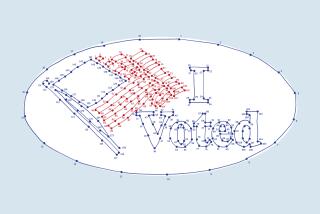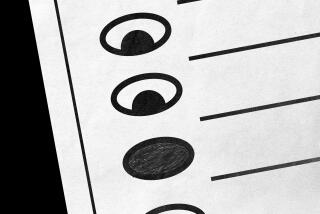Two Primaries Are Better Than One
- Share via
SACRAMENTO — At last, California seems on the verge of confronting, and doing something about, one of the great absurdities of U.S. politics--the length of our campaign season. With luck, a bill shortening the time between the primary and the general election will pass this year.
More than four months have elapsed since the March 5 primary, yet it is still nearly four months to the November general election. Between the California primary and general election, baseball will have gone through spring training, the regular season and the World Series.
Legislators of both parties in California realize how ridiculous this is, and Senate Bill 1975, by Sen. Ross Johnson (R-Irvine), has a good chance to correct the problem in time for the 2004 elections. Nothing the Legislature does this year will be more important to democracy than shortening the state’s yearlong election season.
Candidates seeking to be sworn in as new legislators in December 2002 had to begin filing campaign papers before last Thanksgiving. We now have a shadow Legislature: Candidates nominated in safe districts in March and who will be formally elected in November to replace termed-out legislators.
Johnson’s legislation initially called for moving California’s primary to September, when 15 other states nominate candidates for office. The advantage of a September date is that candidates need run only one campaign until the general election. Such a change would, in effect, be a major campaign-finance reform. Since campaigns would be less expensive, candidates would not be forced to raise money to cover two separate elections.
But elections officials have balked at a September date. They contend it gives them too little time to certify candidates and prepare the necessary sample ballots. Campaign consultants too lobbied against the September date--they, after all, benefit from a longer campaign season. Johnson first moved the date to August, but the final bill, as amended in the Assembly, could return California to its traditional date of the first week in June.
California held its primary in June for half a century, and the June to November time frame worked out fine. This year’s March primary, the earliest in the country, had the lowest turnout in state history because many voters were not ready to vote.
The decision to hold a March primary was made to enable California to be a player in the presidential nominating process. California thus became a victim of the senseless trend of the past 30 years--to front-load the presidential nominating system. Once, the presidential contest followed a logical calendar: Small states like New Hampshire began the progression in March, then the presidential primaries moved to the Midwestern and Southern states, and California finished the season with its June presidential contest. The three-to-four-month primary season was followed by the national conventions in midsummer, but the last convention that was not a coronation occurred in 1976, when Ronald Reagan and Gerald Ford battled for the GOP nomination. With meaningless conventions, the primaries have been so condensed as to be a joke.
In 1996, California moved its June primary to March 26 in the hope of affecting the presidential nominating decision. But South Carolina’s early March primary settled the GOP nomination for Kansas Sen. Bob Dole, and President Clinton was unopposed. So, California moved its 2000 primary to the first week in March. Once again, South Carolina stole California’s political thunder when it picked Texas Gov. George W. Bush--in February. The Democratic contest never developed.
Democrats will set the ground rules for 2004, and they appear to be making an even bigger mess of the presidential nominating process. They have adopted a rule that would allow any state to hold its presidential primary on Feb. 3, with Iowa and New Hampshire holding their contests in January. California is still stuck with March, so, once again, the state’s hoped-for impact will go begging.
This leaves California with two unpleasant choices: forget about presidential politics or move its primary to Feb. 3. Everyone concedes that a February primary for all other offices makes no sense at all (in fact, it makes little sense for president, but that’s up to the national parties). California thus has no real alternative but to spin off its presidential contest from the state’s regular primary, and that is the most important reform in Johnson’s bill. State Democrats have resisted this idea because it would create a third election in presidential years, which might depress turnout. But experience shows that leaving the primary in March isn’t going to boost turnout, either.
There’s a strong practical reason to hold a separate presidential primary in California, and 2004 would be a good time to start. If national candidates don’t have to campaign in the West, political money raised in California will simply go to enrich newspapers and television stations in Iowa and New Hampshire. And Western concerns such as water policy and Pacific Rim trade deserve an airing in the presidential nominating campaigns.
Maybe the national parties will some day return to a more logical calendar. But until that happens, we have no choice but to hold one primary for president when the snow flies in the Sierra and one for state offices in June or August.
More to Read
Get the L.A. Times Politics newsletter
Deeply reported insights into legislation, politics and policy from Sacramento, Washington and beyond. In your inbox twice per week.
You may occasionally receive promotional content from the Los Angeles Times.










